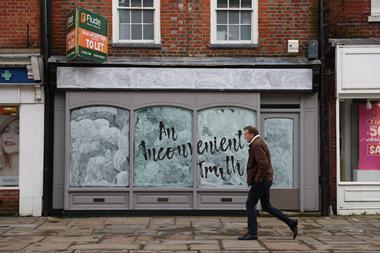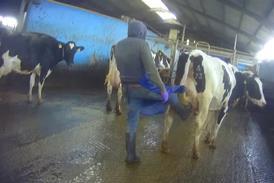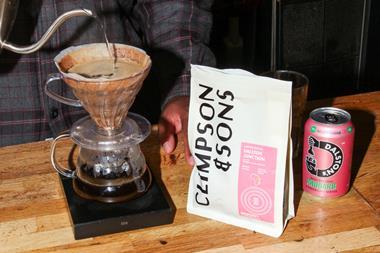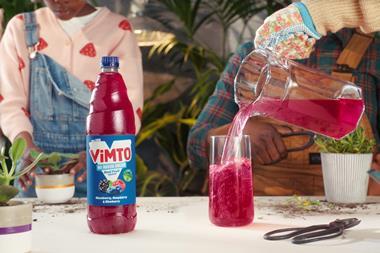Costco is an expert at pushing just in time' to its limits as Elaine Watson discovers in Lutterworth
Pay a late afternoon visit to plot 4400 at Lutterworth's Magna Park industrial estate and it's hard to believe you're in a central distribution depot servicing the entire UK warehouse club operations of Costco.
For a start, it will be virtually empty. By 3.30pm, all there is to see is 155,000sq ft of floor space and a patrolling security guard.
Between 5am and 3pm, however, up to 2,500 palettes destined for Costco's 11 UK warehouse clubs will have passed through the depot, which starts and ends each day empty.
Costco is able to sell top brands at between 10% and 15% less than its UK competitors because it pushes "just in time" to its limits, says logistics chief Cyril Rolland. Consumer goods at Costco are genuinely fast moving.
With 3,500 lines, the US warehouse giant drives down costs by taking stock out of the supply chain, using its global purchasing power to buy in huge volumes.
By keeping everything moving, we release cashflow, says Rolland. "Magna Park is basically a huge rectangular cross docking box with 36 doors at one end and 36 at the other. We just consolidate and split merchandise."
The depot's 36 exits are divided up between the 11 clubs, with the busiest clubs allocated up to eight exits or loading bays. With no racking or picking, staff are employed simply to log incoming goods into the computer system, shunt them across the floor of the depot and pack them into lorries at the opposite end of the building.
Costs are driven down further by keeping handling down to an absolute minimum, says depot manager Tommy Ryan. "A palette comes in; we label it; it goes to the store; they take off the shrink wrap and sell it. Simple."
Some palettes require splitting and sorting into separate loads destined for a number of different warehouses, but most remain intact.
To maximise the efficiency of the operation at every stage, Costco ships in only full containers, and 30% of the vehicles departing from Magna Park will return from a warehouse club with backhauls picked up en route from nearby suppliers. Likewise, if the multi-temperature lorries leaving from the 30,000 sq ft chilled and frozen section of the depot are not full at the end of the day, ambient goods are added from next door to ensure no outgoing lorries leave empty.
Ordering as well as purchasing is handled centrally from Costco's headquarters at Watford and based on sales data relayed from warehouse clubs, which sell everything from cameras to toys, jewellery, clothes, mattresses, toiletries, chilled food and petfood.
When a supplier arrives at the depot, staff key in the purchase order numbers of the incoming goods into the computer system via a handheld radio frequency terminal. This in turn generates a barcoded licence plate to be attached to each consignment and tells the receiver which warehouse clubs the goods are destined for.
When the palettes have been tagged and moved to the correct loading bays for shipping, staff scan the barcodes and key in the truck numbers and destination store numbers into their RF terminals.
The system then generates consignment numbers and documentation that staff at the warehouse clubs can check against a truck's contents.
During a busy period, an established club such as Watford could receive two to three truckloads of chilled and frozen goods and up to 10 ambient deliveries a day.
The only things that don't move quite as quickly are US imports, which account for about 5% of the traffic through the Lutterworth depot. Each pack arriving from across the Atlantic must be split so that each item can be individually labelled in metric units and given a best before date to comply with UK trading standards. As a result, any stock still in the depot at the end of the day is likely to have come from abroad.
But the benefits of global sourcing are so great that the additional stockpiling and handling costs are worth it, insists Ryan, who has already got plans to extend the depot on either side into surrounding land as the UK business expands.
"As it is we have the capacity to support 20-25 warehouses," he says. "The expanded depot could service as many as 45." But with only 11 retail outlets and planning permission for new sites taking from six months to seven years to achieve, he probably doesn't need to get the builders in just yet.
{{FOCUS SPECIALS }}
Close menu
- Home
- Retail & Wholesale
-
Products & Suppliers
- Back to parent navigation item
- Products & Suppliers
-
Product Categories:
- Back to parent navigation item
- Product Categories:
- Alcoholic drinks
- Bakery
- Cereals & breakfast
- Cheese
- Chicken & poultry
- Chocolate
- Confectionery
- Crisps, nuts & snacks
- Dairy
- Fish
- Fresh produce
- Frozen
- Household
- Meat
- Own Label
- Sauces & condiments
- Seasonal
- Soft drinks
- Vaping
- Vegan & plant-based
- World foods
- Suppliers
- People
- Reports & Data
-
Topics A-Z
- Back to parent navigation item
- Topics A-Z
-
Popular topics:
- Back to parent navigation item
- Popular topics:
- Cost of living crisis
- Crime
- Deposit Return Schemes
- Finance
- Government & Regulation
- Health
- Inflation
- Loyalty
- Marketing
- Mergers & Acquisitions
- New Product Development
- Sourcing
- Supply chain
- Sustainability & environment
- Technology
- Ultra Processed Foods
- Vaping
- A-Z all topics
- Content by type:
- Events
- Subscribe now
Sign in to comment on this article
Not logged in before? Register for FREE guest access today.
You will be able to:
- Read more stories
- Receive daily newsletters
- Comment on stories
Advert
Related articles
-
-
-

Big 30 wholesaler report 2025: an inconvenient truth
Sponsored by JTI and Infor, By Ronan Hegarty
-

-
















No comments yet